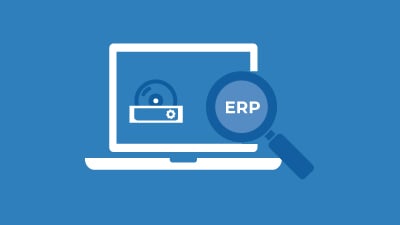New Year, New ERP: 10 Reasons to Re-Evaluate Your Current ERP System Before 2020

For some businesses, the end of the year is the busy season. For the rest of us, the closing weeks of 2019 will probably be pretty quiet. It’s a great moment to think about what you want to achieve in 2020. You can get your 2020 plans organized before taking a little well-deserved time off. This period of time also offers an opportunity to take a clear-eyed look at your current Enterprise Resource Planning (ERP) system and ask yourself if it is not, at long last, time to make a change.
This may seem like difficult decision, as most companies have invested a lot of energy and money into getting their ERP to work for their unique operational requirements. Change is a big hassle… unless it’s not. The new generation of cloud-based ERP solutions is making the system change process a lot easier to handle.
Case in Point: Our Customer Who Migrated from Everest to Acumatica
Our customer, M3 Technology Group, assessed how Everest, it’s incumbent ERP, was meeting its needs. The commercial installation service company for AV networks and structured cabling was struggling with a lot of manual entry and realized it would be better served by a cloud-based ERP that was flexible enough to accommodate its mobile workforce.
Since making the transition, M3 has experienced substantial business growth (boosted sales revenue from $15 million to more than $30 million) and continues to see improvements in office-based and remote employee efficiency and productivity.
Is it time for your company to make this switch too? Find out below.
10 Reasons to Consider a New ERP in 2020
Here are ten reasons why you would be wise to consider migrating to a modern, cloud-based ERP:
1) The cost of running it keeps going up
Are you paying more and more each year to maintain a customized ERP solution? For example, with a customized system, upgrading to the newest release can be quite costly. You may have no choice but to make the upgrade if you want to maintain support. Cloud ERP solutions are designed with a single-platform architecture that enables extensive customization for the client. Customization is far less expensive to implement and maintain.
2) Your software is out of date
The original vendor who wrote your legacy ERP software may have gone out of business. Or, the company was acquired by another firm that no longer supports the product very well. If this is your situation, it’s time to migrate.
3) It’s hard to see what’s happening across your business
Legacy ERP systems tend to be siloed. They may gather data about discreet operational areas, but they are usually not good at delivering a single source of entity-wide information.
4) You’re relying on a veteran IT person
If one or two employees with long tenures are all that’s holding your ERP together, you’ve got a problem. We have nothing against experienced professionals… it’s just that when every ticket goes through them and no one else has any idea of how to repair or change the system, there’s a strong possibility your company is being held back by that system’s limitations.
5) You can’t integrate with other business systems or platforms
Modern ERPs are easy to integrate because they have standards-based APIs. They can quickly and inexpensively connect with other systems like CRM or logistics management as well as with systems at outside firms. Older systems generally don’t do well in this department. This is a loss for your business. People will be working off incomplete data sets and relying on manual transfers of information in order to complete workflows.
Learn more in Why ERP Needs to Integrate.
6) The hardware is out of date
This may not seem like a big problem if the hardware is working. Over time, though, out-of-date equipment can get expensive to maintain. You will be missing out on certain efficiencies and capabilities like mobile computing.
7) You have no easy way to support changing business requirements
The way you do business, indeed the entire industry you’re in, will change over time. If your ERP is still configured to work the way you did five or ten years ago because you can’t get it to change, you’re letting the system dictate how you run your business. That’s not a winning formula.
8) You’re spending a lot to operate the system
Is your legacy ERP getting very expensive to operate? High costs can arise from hiring consultants to deal with unsupported software, licensing costs and system changes.
9) Your functionality is limited
As your business grows and evolves, you may want your ERP to handle new processes and functions, e.g. take input from mobile data scanners or connect with data analytics tools. If your legacy ERP functionality is hard to modify, that’s a sign it needs to be replaced.
10) Your information access is limited
Does your legacy ERP have data in it that’s hard to get to? Generating reports might be time-consuming or even require an external consultant. This is a serious impediment to working the way you should in 2020.
Set Your Company Up For Success in 2020 With Acumatica Cloud ERP
At Cloud 9 ERP Solutions, we believe in the transformative power of the cloud for the modern business. We’ve been in this business long enough to understand the game-changing nature of cloud applications, and have helped companies just like yours to make an informed and confident decision about their path to cloud ERP with Acumatica.
Click here to schedule a free evaluation of your business and operations or to learn more. We’d like to get you on the right Cloud ERP path with Acumatica!
Still not sure? Browse the links below to see if it is time for your company to make the switch:


